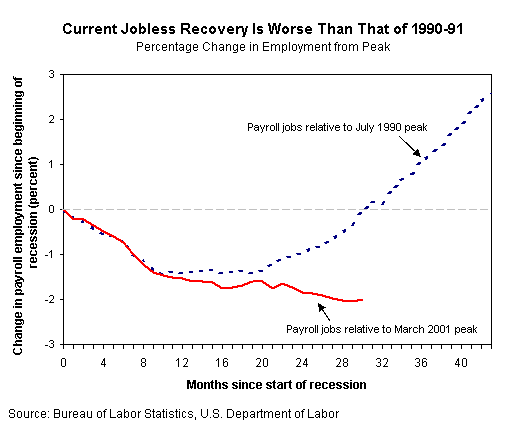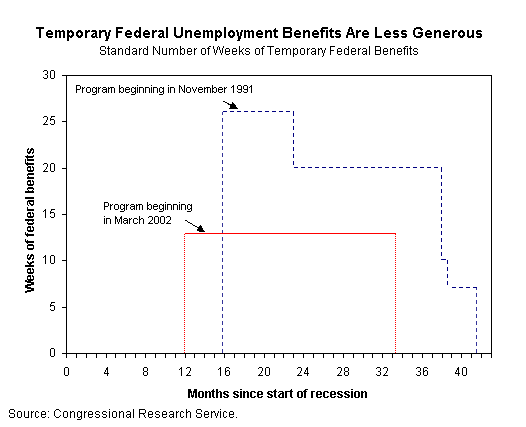
E-PICs is a regular feature of the JEC Democrats' webpage.
New charts, each highlighting economic data of interest with important policy implications, will be released periodically.
Browse the archives
|
October 22, 2003
Unemployment Insurance

Download this chart.

Download this chart.
In the early 1990s it took 31 months after the start of the recession in July 1990 to recover the jobs lost in that recession, making it the most prolonged recession and jobless recovery since the 1930s. Notwithstanding a modest pickup in job creation in September 2003, the current jobless recovery will reach the 31-month mark in October 2003 with a substantial jobs deficit, and it will be many more months before that deficit is erased.
Unemployment Insurance (UI) provides benefits for up to 26 weeks for eligible beneficiaries, but in September 2003, 23 percent of the 9 million unemployed Americans had been unemployed for 27 weeks or longer—the highest percentage in two decades. Although it was late getting started, the federal program implemented in November 1991 to provide temporary extended benefits to workers who had exhausted their regular UI benefits was much more generous than the Temporary Emergency Unemployment Compensation (TEUC) program begun in March 2002. Moreover, TEUC is scheduled to expire in December 2003, when there will still be a very large jobs deficit.
|
|

